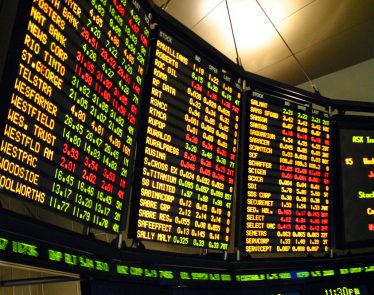
In 2015, the NEO Exchange hit the market running. It promised to reverse the mentality that stock exchanges had developed over the years. Instead of marketplaces trying to turn a profit for themselves, the NEO Exchange wanted to put investors, capital-raising companies, and dealers first. It has done so successfully over five years, becoming the third most active marketplace in Canada by volume traded.
More and more companies are looking to list their securities on the NEO Exchange. For the individual investor, we’re going to cover several aspects, from membership and trading fees to what platforms you can trade NEO stocks on.
Trading on the NEO Exchange
Owned by Aequitas Innovations, the NEO Exchange focuses on improving liquidity, which allows investors to gain access to investment opportunities. NEO also uses a structure that encourages fairness while offering lower transactional fees and real-time market data for all securities listed.
For NEO, it’s all about leveling the playing field for investors, capital-raising companies, and dealers, and it does so in various ways.
The Two Types of Traders
Identifying two types of traders is one of the ways the NEO Exchange tries to level the playing field for long-term investors.
The NEO Exchange has stated:
“We see two distinct types of traders operating in the markets today, and we classify them based on their trading profile.”
The first is the LST trader, which represents high-frequency traders who trade for their own accounts. LST traders do so by using co-located trading strategies and world-class technology. It’s important to note that with LST traders, orders are not based on long-term investment strategies.
The NEO Exchange, which offers investors a “speed bump” to stop predatory high-frequency trading, also identifies what they call a NEO Trader.
According to the exchange, NEO traders include the different kinds of traders that are operating in the markets. They work on behalf of long-term investors, buying or selling securities. Investors will base the decision to buy or sell on the predicted value of the securities.
When addressing the NEO traders, the NEO Exchange explained that “their classification includes all institutional and retail client flow.”
It Doesn’t Stop There
NEO also consists of three venues, all of which came about to help level the playing field for investors. Each also has a different fee model: it is imperative for those thinking of listing on NEO to remember this.
1. NEO-L Venue
The NEO-L gives NEO trader orders priority over high-frequency traders. No matter which orders hit the market first, the NEO trader order will remain at the top of the list.
This venue follows a make-take fee model. The exchange explains that with this model, passive orders receive a rebate, while active orders pay a fee. Note, however, that active orders do not pay this fee during the opening call.
2. NEO-N Venue
The NEO-N venue has one goal in mind: encourage liquidity for long-term investors.
It attempts this in various ways, such as giving priority to larger long-term investors or offering a randomized “speed bump,” which is a 3–9 millisecond delay that applies to orders from high-frequency traders. Something like the speed bump is vital because predatory high-frequency traders often buy up the shares before other investors can, and then proceed to sell them back to these individuals at higher costs. They can do so by utilizing their technological speed advantage. But with its speed bump, NEO tries to stop this from happening.
The fee model in NEO-N, according to the NEO Exchange, is a take-make model. What this means is that the passive side of the order is required to pay a fee, while the active side receives a rebate.
3. NEO-D Venue
The NEO-D venue gives NEO trader orders priority over high-frequency traders. It allows participants to submit active orders, in addition to allowing orders from different accounts to interact with each other. The NEO Exchange explains: “subject to the Counterparty Election specified on the passive orders, orders from all accounts may interact with each other.”
The fee model in this venue is essentially a take-make fee model, as passive orders pay a fee while active orders receive a rebate.
Membership Fees
According to the NEO Exchange, all members must pay a membership fee. There are two options to choose from when applying to the exchange, but the opportunity to switch will not be available after the application process is complete. If, however, the NEO member is desperate to change membership options, they can do so after two years.
The first membership option is $1,000 a month. For this option, each month, the Member pays the monthly membership ($1,000), as well as whatever trading fees accumulated that month. The second option is a $2,000 monthly membership fee, where the Member pays either the monthly minimum payment ($2,000) if trading fees are below $2,000, or, if trading fees exceed $2,000, the Member pays the $2,000 plus any additional trading fees.
Trading NEO Stocks Through Questrade
As more companies look to list securities on the exchange, so too are people looking to trade NEO stocks. But where can they do this? One option is Questrade.
The digital, low-cost online brokerage, which MoneySense ranks highly enough to label it as the best online broker in 2019, has access to transparent exchanges and marketplaces. Visible markets include Alpha, Nasdaq CX2, and, you guessed it: the NEO Exchange.
There are a few things to note about trading NEO stocks on Questrade. First, when individuals place orders through the online brokerage, the orders route to the marketplaces mentioned above via the SOR. Further, when orders are made, individuals can use the trading platform to update their order, like adding a specific duration, for instance.
Opening an account with Questrade is easy, so you can start trading now.
Takeaway
The NEO Exchange has many positives. The Canadian marketplace already has a billion-dollar listing and more than 70 ETFs listed in addition to its corporate listings, and it’s surpassed the CSE in terms of volume traded. To top it off, listing on the exchange is straightforward, and when investors have access to platforms like Questrade, so too is the process of trading NEO stocks.
Learn more about the NEO Exchange.
Disclosure: Some links within this article are affiliate links. There is no additional cost to you but MicroSmallCap will earn a commission if you click our link and make a purchase.
Featured image: Facebook












